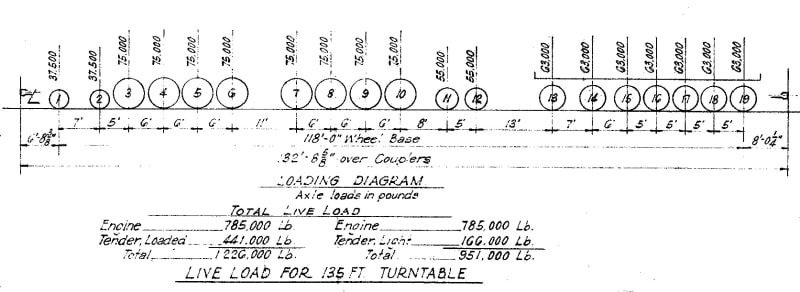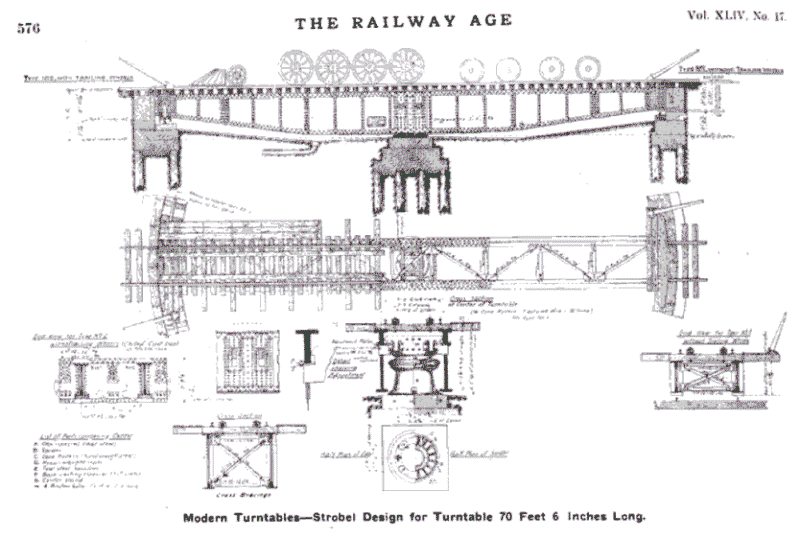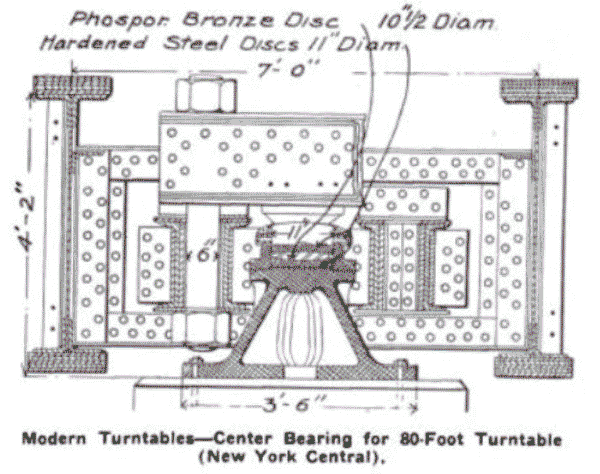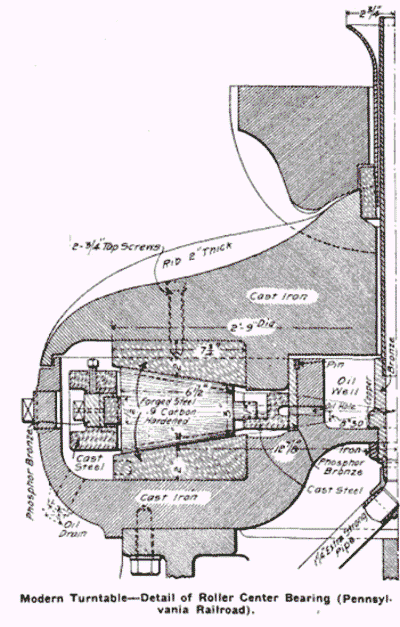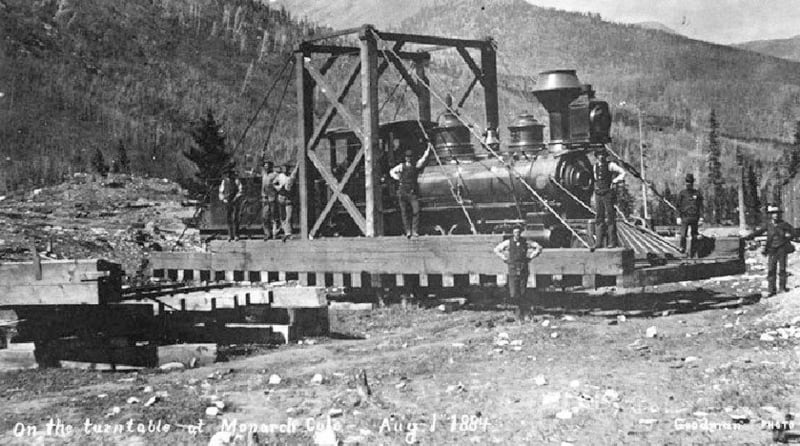Railroad turntables support track that can be spun around to align with various radial trackage.
At first, they had only a center bearing. This meant that the locomotives had to be perfectly balanced before the turntable was turned (much like a swing bridge).
Fairly quickly, a ring rail was added out at the ends of the turntable bridge, along with wheels. Thus the need for perfect balance was eliminated.
My point of discussion: the bridge was then supported at three points: center and two ends. I found this odd, because the turntable bridge is "always" a single span (that is, there is no hinge in the middle). Thus there's a span supported at both ends and at the center.
That surprised me. It does appear that that design is indeterminate. I would have thought such a bridge would be supported only on the ends, with a non-loadbearing center pivot. But that appears to not be the case. I suppose this could be viewed as the use of "outriggers"--the outer bearings only being used when the bridge was out of balance. A problem with this is that those outriggers must support a huge load as locomotives move on and off the bridge. Being that sturdy, I do wonder at the use of a loaded center bearing at all.
Also, railroad turntables are turned by using electric motors on those wheels on the outer ends. They thus would HAVE to be loaded to get traction to turn the locomotive.
I'm finding this design odd, and am wondering what bridge people here think about it.
spsalso
At first, they had only a center bearing. This meant that the locomotives had to be perfectly balanced before the turntable was turned (much like a swing bridge).
Fairly quickly, a ring rail was added out at the ends of the turntable bridge, along with wheels. Thus the need for perfect balance was eliminated.
My point of discussion: the bridge was then supported at three points: center and two ends. I found this odd, because the turntable bridge is "always" a single span (that is, there is no hinge in the middle). Thus there's a span supported at both ends and at the center.
That surprised me. It does appear that that design is indeterminate. I would have thought such a bridge would be supported only on the ends, with a non-loadbearing center pivot. But that appears to not be the case. I suppose this could be viewed as the use of "outriggers"--the outer bearings only being used when the bridge was out of balance. A problem with this is that those outriggers must support a huge load as locomotives move on and off the bridge. Being that sturdy, I do wonder at the use of a loaded center bearing at all.
Also, railroad turntables are turned by using electric motors on those wheels on the outer ends. They thus would HAVE to be loaded to get traction to turn the locomotive.
I'm finding this design odd, and am wondering what bridge people here think about it.
spsalso

